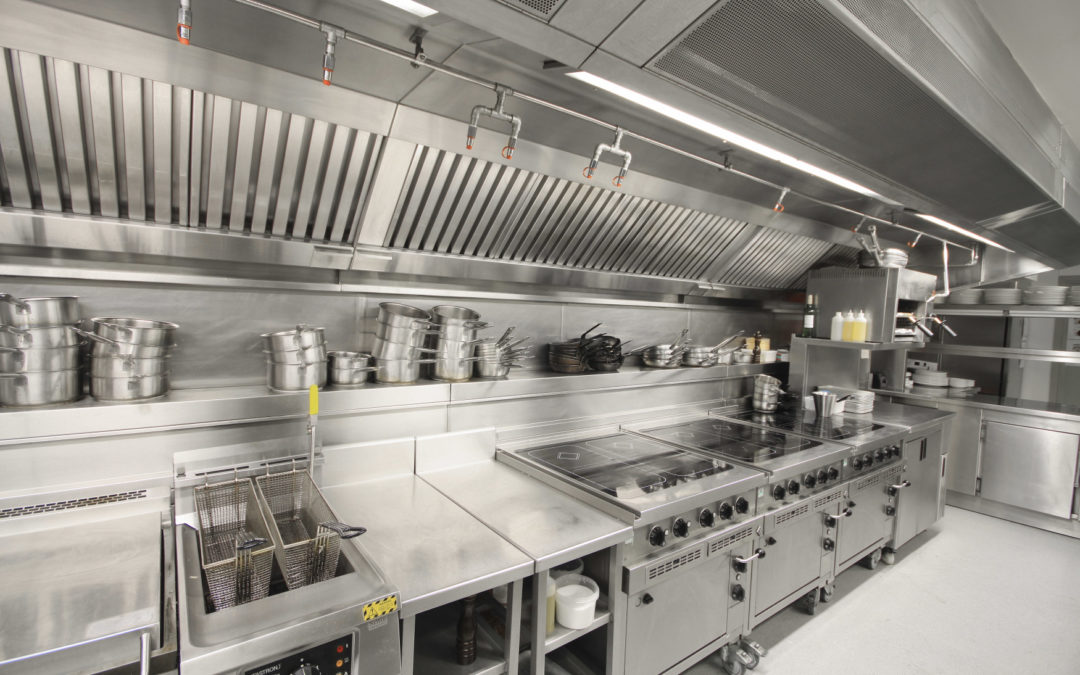A frequently used kitchen requires heavy-duty cleaning. Most commercial restaurants kitchens are fitted with things that we don’t necessarily find in home kitchens, thus making it a hell of work to maintain such a kitchen.
Ventilation hoods and Grease traps are crucial features in any commercial kitchen and any restaurant owner can tell you how important it is to keep them well maintained. Below we get to know what a grease trap is and why we need them cleaned more often.
What is a Grease Trap
In its simplest definition, a grease trap is a tank built to trap solids from the kitchen drains at the same time, allowing the water portion to flow out into other waste tanks or straight to the trenches. The grease trap contains the solids and grease, which with time, would begin to block the pipes and eventually destroy the trenches.
How does grease trap work?
Liquid waste such as food particles, grease and water exits the kitchen sink and enters the grease trap via the “inlet.” Since grease floats, it is then trapped between the “baffle walls,” allowing only the water to flow out of the outlet either into grey-water holding tanks. Or into underground piped dispersion areas (trenches)
Why do we need to Clean Grease Traps?
Regularly cleaning the grease trap is important for any commercial kitchen. Therefore restaurants are advised to opt for a professional facility management provider who specializes in commercial kitchen cleaning services, the benefits are;
Prevent backup and clogs
Enormous fat, oil, and grease (or FOG, common industry shorthand) usually build up in the grease traps; they can clog. This reduces the traps’ functionality. They also cause the system to back up (a serious health hazard), especially in a busy kitchen.
Reduce expenses
The chaos resulting from an overfilled grease trap shouldn’t be underestimated. These messes are expensive to clean up and will often require one to avoid receiving customers doing the cleaning process. This can be catastrophic for an industry with razor-thin profit margins.
Keep the environment clean
The purpose of grease traps is to keep fats and oils out of your building’s sewage system. Whenever the traps overflow and lose their ability to capture more grease, the majority of it ends up flowing outside, often into in-ground drainage fields or major waterways. This is very harmful to the environment and can cause a hefty fine.
Reasons to Clean the Kitchen Hood
By having a regular kitchen hood cleaning, one can make the restaurant a cleaner and safer place for staff and customers alike. The cleaned kitchen environment will:
Improve ventilation
The purpose of a kitchen ventilation hood is to remove the fumes from the stovetop, thus improving the air quality for both staff and customers. This is because, over time, those fumes accumulate and form a greasy residue on the hood that can impair its ability to function. The bottom line, regular cleaning keeps your kitchen hood effective even in the busiest kitchen.
Avoid fires
When grease accumulates in the hood, it can present a serious fire hazard. Take, for example, when one got a highly flammable material and a powerful heat source just a couple of feet away. Failure to keep the hood cleared of grease will put your staff and business at risk because it can increase the fire outspread if ignited.
Maintain kitchen hygiene
Apart from having the kitchen look clean at first sight, cleaning the kitchen hood also prevents unwanted insects and the flu that oils attract. These flues spread with time filling the kitchen if not cleaned early.
Haven’t known the benefits of cleaning the commercial kitchen, let’s get to know how this process is being carried out. It’s always advised to call professionals to handle this project since they are experts, but in a case where urgent attention is needed, a few of the commercial kitchen users ought to handle minor steps while waiting and expecting the arrival of the professionals. Below are the steps one ought to follow in cleaning grease trap properly;
How to Clean a Grease Trap
When trying to pump out the grease trap, its important to check that you can perform a thorough pump out, clean and inspection of the tank by yourself before proceeding. But on any occasion, you can contact us to provide the best quality clean to ensure your tank is kept in optimum condition. The process involved includes:
- Lifting the main lid and pump out the grease trap
- Try Scraping down all walls and baffles to remove accumulated grease and dirty water
- Next, rinse out the tank with a garden hose
- Pump out the rinsed residue
- Inspect the tank when done and advise of any repairs or maintenance needed
When done cleaning, another important factor to know is maintaining the grease trap to prevent it from getting clustered easily, below are steps to follow to ensure proper cleaning of the grease trap.
Tips for maintaining your grease trap
- Don’t leave taps running unnecessarily
- clean grease out of pans before washing
- Use strainers in the sink
- Have your grease trap pumped out regularly
- Repair leaking taps
- never pour oils down the sink
In conclusion, when trapped grease builds up between baffle walls to the point where grease cannot be retained in the grease trap, it will automatically flow out of the outlet, thus solidifying in outlet pipes and blocking up drains which will eventually destroy or block the trenches. Regular cleaning prevents this from happening, leaving the commercial kitchen in hygienic conditions.
ChutePlus LLC is an award winning maintenance & cleaning company in NY that can handle all your sanitary needs.

